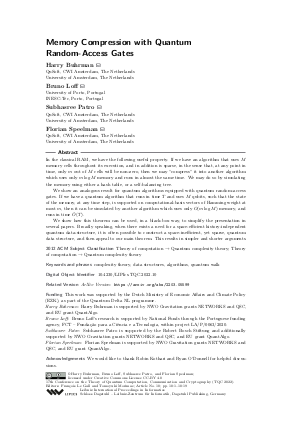LIPIcs.TQC.2022.10.pdf
- Filesize: 0.77 MB
- 19 pages

 Creative Commons Attribution 4.0 International license
Creative Commons Attribution 4.0 International license



Feedback for Dagstuhl Publishing